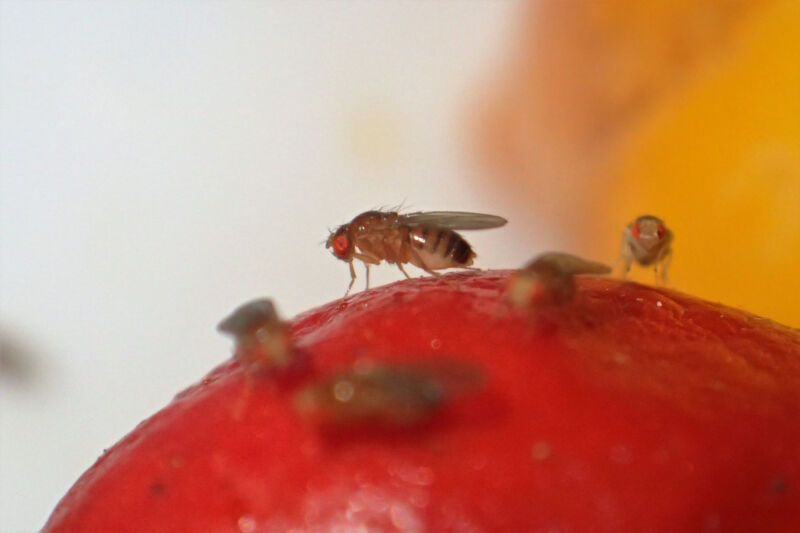
When we think of evolution, we often think of slow, gradual changes that happened over millions of years. However, new research suggests that the process can be quite rapid, causing major changes over the course of a year in response to seasonal changes.
The paper describing that research, published last week, studies the evolution of fruit flies over about 10 generations, with each generation of flies taking less than a dozen days. Although fruit flies are notoriously short-lived and the distance between their generations is small, evolution could be happening more quickly than previously expected, even in longer-lived organisms. That’s according to Seth Rudman, an assistant professor in the school of biological sciences at Washington State University and one of the authors of the paper.
“In recent decades, there has been a growing realization that evolution can happen quite quickly,” he told Ars.
I just want to fly
For the new study, the research team released 1,000 fruit flies into 10 outdoor enclosures. The enclosures were netted with fine netting, and each had its own small tree to create a habitat similar to that of the wild. Over the course of four months, the researchers allowed the flies to hang out in the enclosures and each group of flies was fed the same diet. The housing set “allows you to track multiple populations, all evolving in response to the same abiotic and, to a large extent, biotic factors as well.”
Over the course of the experiment, there were about 10 generations of flies and the populations expanded rapidly. At its peak, the experiment saw up to 100,000 flies in a single enclosure.
The team regularly checked the flies to get an idea of how the insects’ genes and traits were changing. The researchers identified several characteristics, such as reproductive success and heat or cold resistance. To ensure that these altered traits were the result of genetic changes, the researchers removed 2,500 eggs from each housing and raised the new populations individually for three generations before being tested to ensure the changes persisted.
At each check-in, the team also randomly selected 100 flies from each enclosure and sequenced their entire genomes. Since the DNA of all 100 flies was mixed before sequencing, this depicted the baseline changes of the average fly. But it may be that some less common differences have been missed.
Live fast, die young
Over the four months, the researchers saw changes in the frequency of some variants in 60 percent of the flies’ genome. That’s a particularly big change that Rudman called a “stunning number.” However, only a small fraction of these represent variants that were selected due to the changing conditions as summer shifted to fall. As those variants were selected, they moved along nearby regions of the chromosome, changing the frequency of adjacent variants as well.
The researchers were able to see that the changes were adaptive rather than just genetic drift. They could see it because the changes occurred in the populations of most of the enclosures rather than just one or two.
According to Rudman, the speed of all these changes was unexpected, showing that the flies had evolved and adapted to their environment faster than anyone had previously measured — along the timeline of ecological changes in the enclosures.
Rudman noted that although the fruit flies have a short lifespan and breed quickly, evolution and adaptation over generations may occur more quickly than originally thought in other species. However, he added that evolution is much more difficult to study in creatures that live more than a few days. But, “Evolution can happen very, very quickly,” Rudman said.
Science, 2022. DOI: 10.1126/science.abj7484 (About DOIs)

